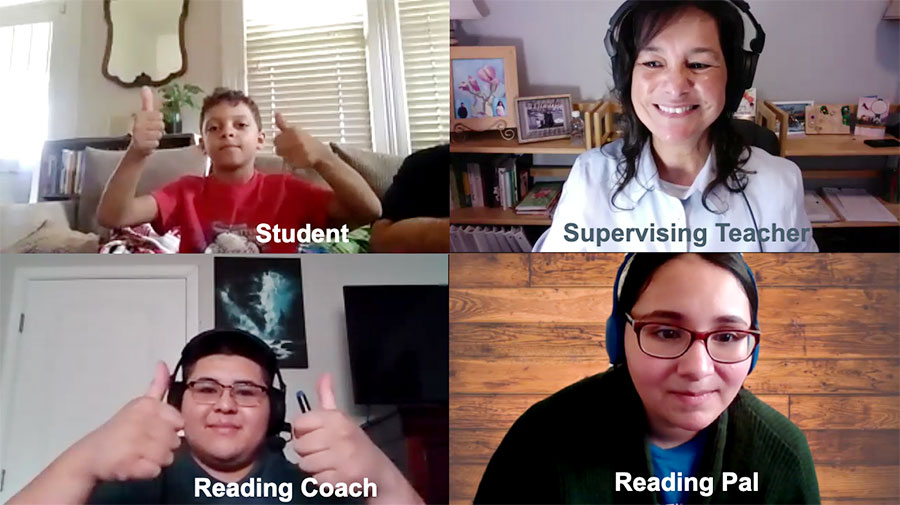Teaching a student Learn to Read is a team effort
Research confirms that reading isn’t a natural process or a guessing game. Written language is a code, and children must learn how to crack it through systematic phonics instruction, vocabulary, and plenty of support and encouragement.
That’s why our approach to helping students learn to read is a team effort with three distinct layers of support:
The Supervising Teacher
The placement is also an opportunity for the Supervising Teacher to introduce a helpful custom strategy that sets the child up to experience success. This strategy begins the program with a positive, engaging learning experience that boosts the student’s confidence and enthusiasm for reading.
This Supervising Teacher oversees the student’s experience throughout the program and meets with the Reading Coach and Reading Pal to evaluate progress.
The Reading Coach
The Reading Coach establishes a mentor relationship with the student, outlines assignments, and reviews reading strategies during each coaching session.
Coaches may view student’s workbook lessons and ask students to read words, phrases, or sentences in the lesson. They will review the main points and check for understanding. The Coach listens carefully to ensure students are not guessing, but are effectively using reading strategies to read correctly.
The Reading Coach also recognizes the student’s efforts and accomplishments, encouraging their sense of confidence in becoming a “Super Reader.”
The Reading Pal
The Reading Pal is similar to a teaching assistant who facilitates the student’s engagement during the lesson. Grade school students benefit from reading support during lessons for both in-class and remote sessions.
During remote sessions, the Reading Pal pauses the recorded lesson periodically to check the student’s understanding of new skills. At the end of the lesson, the Reading Pal reinforces the student’s learning by asking them to reread the content covered.
The Reading Pal can be a family member or designated person who participates in the viewing of the lesson with the student, stopping the lesson periodically to have the student respond to the teacher’s questions or to give an answer to the question being asked.
The Reading Pal Meeting Session
Typical at-home online reading sessions last for 20-30 minutes and include a warm-up exercise, a reading lesson, and an exercise in the workbook. Students generally complete two to four reading sessions weekly. Our testing has consistently measured significant reading gains when a student engages in three or more lessons per week followed by a Reading Coach session.
Parent/Family Member Participation
Studies show that strong relationships between students and teachers improve engagement, motivation, learning gains, and academic achievement. For this reason, we emphasize positive, long-term relationships between students and their assigned Reading Coach and Reading Pal.
In addition, we strive to closely involve the child’s family! A key difference in the Learn to Read online engagement is the presence of a parent or family member who will extend emotional support.
Family members can provide regular reinforcement of reading strategies by using everyday opportunities to practice new words. They can also celebrate the child’s progress, read with them, and offer ongoing encouragement.
They say “it takes a village,” and our Learn to Read program embraces this concept. Students form relationships with positive, caring adults united by a common goal: helping them develop the skills they need to read fluently and confidently!



